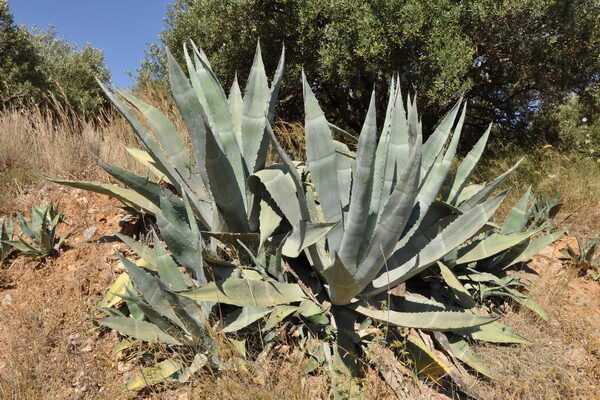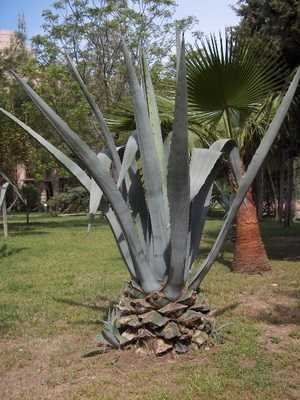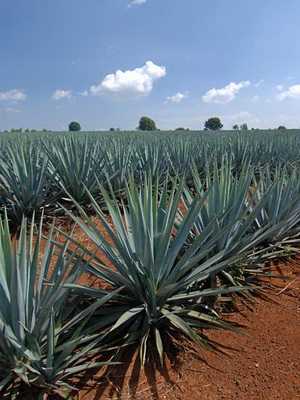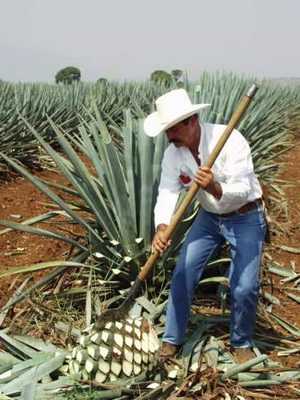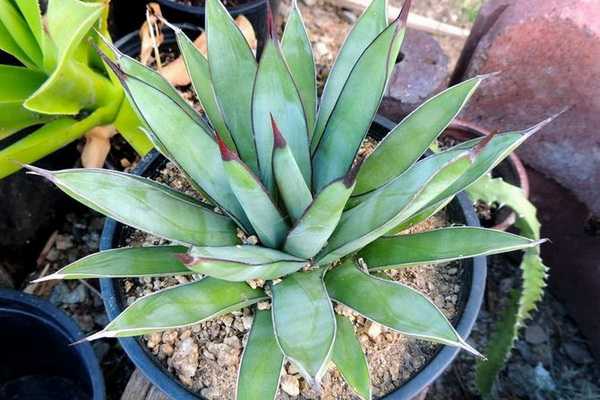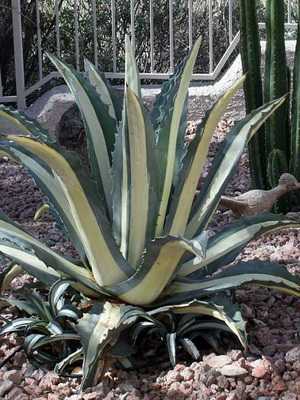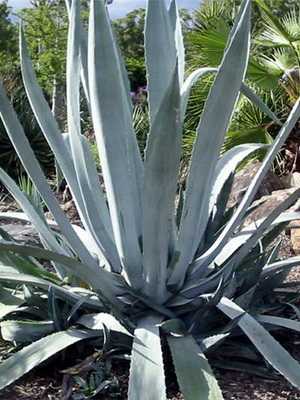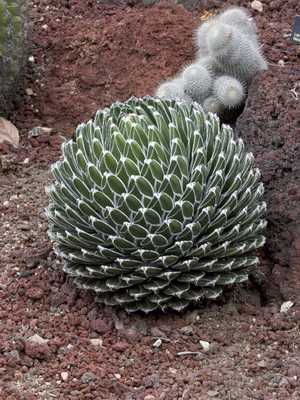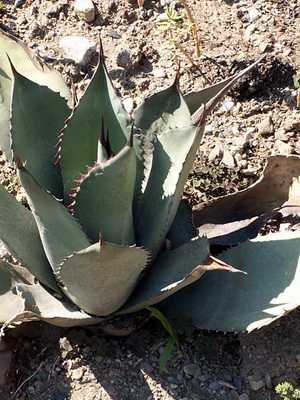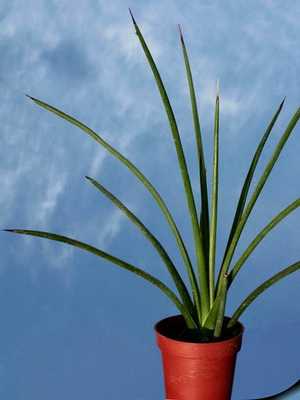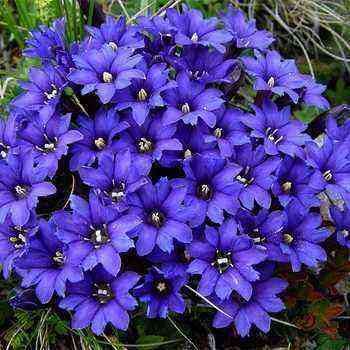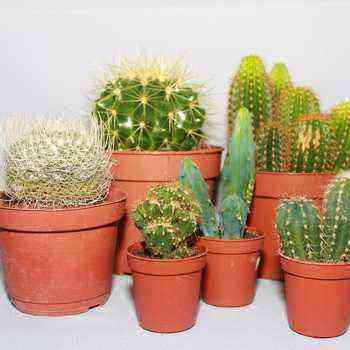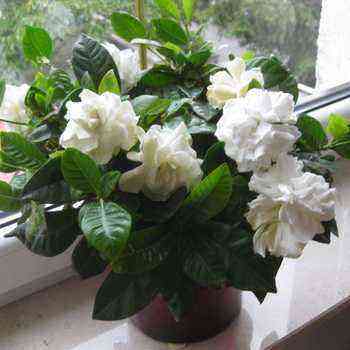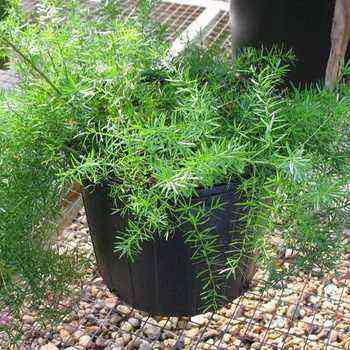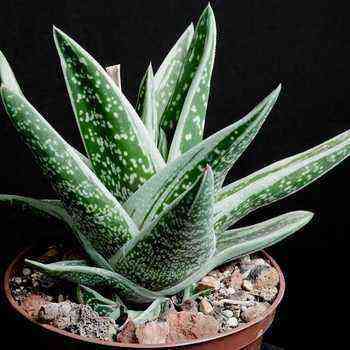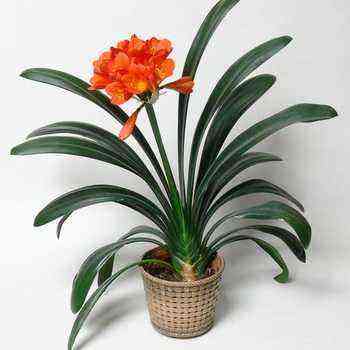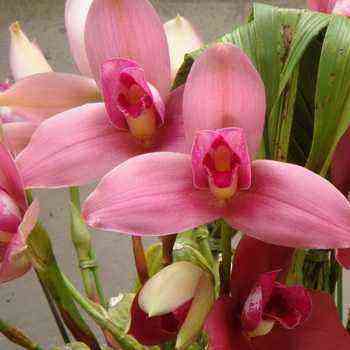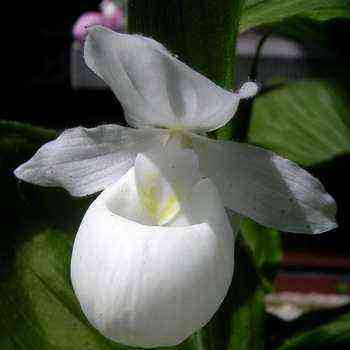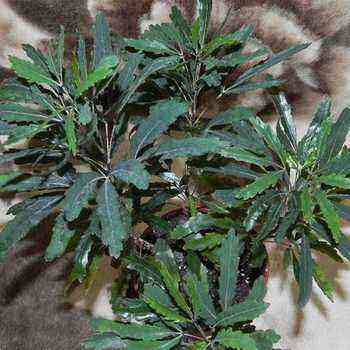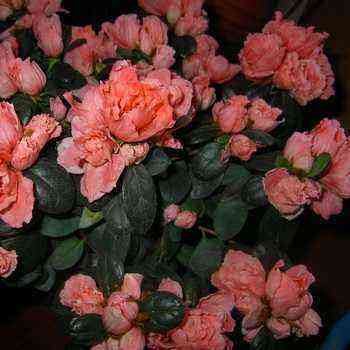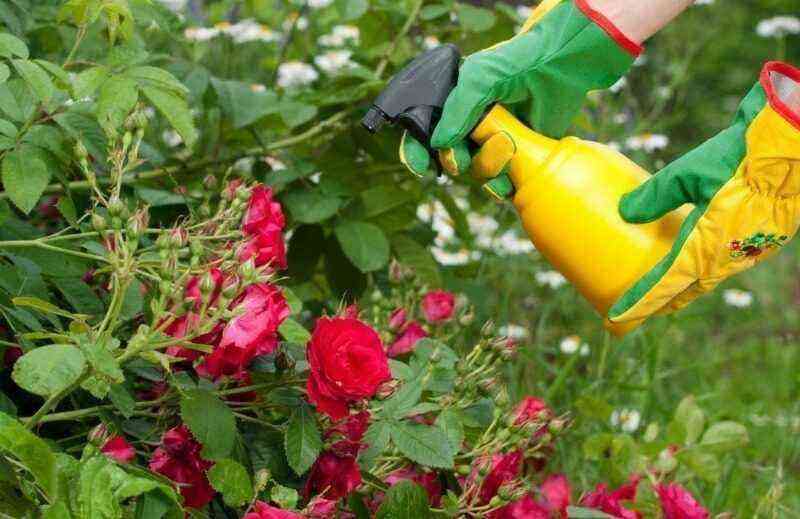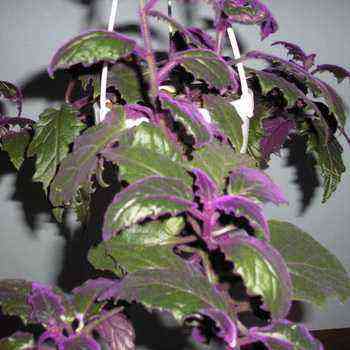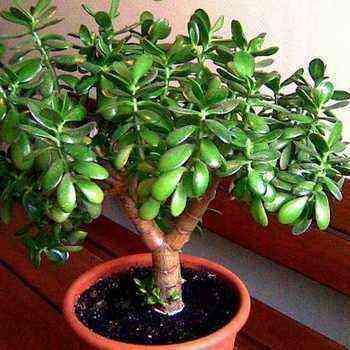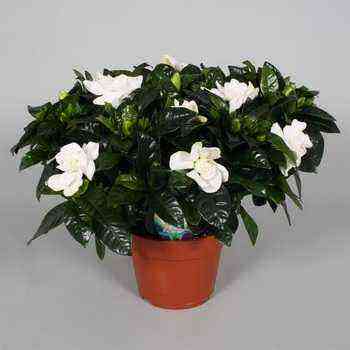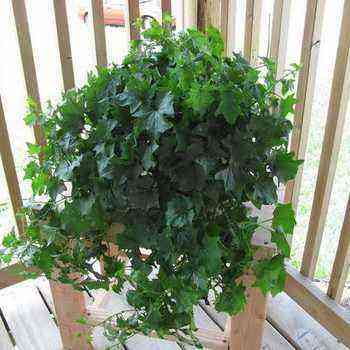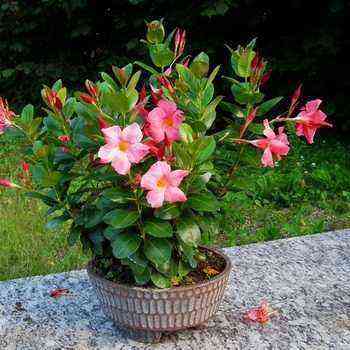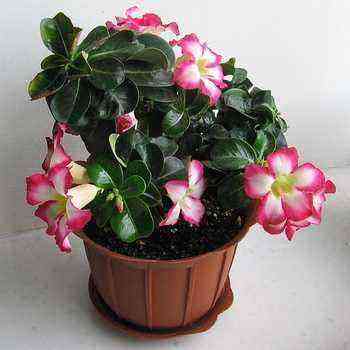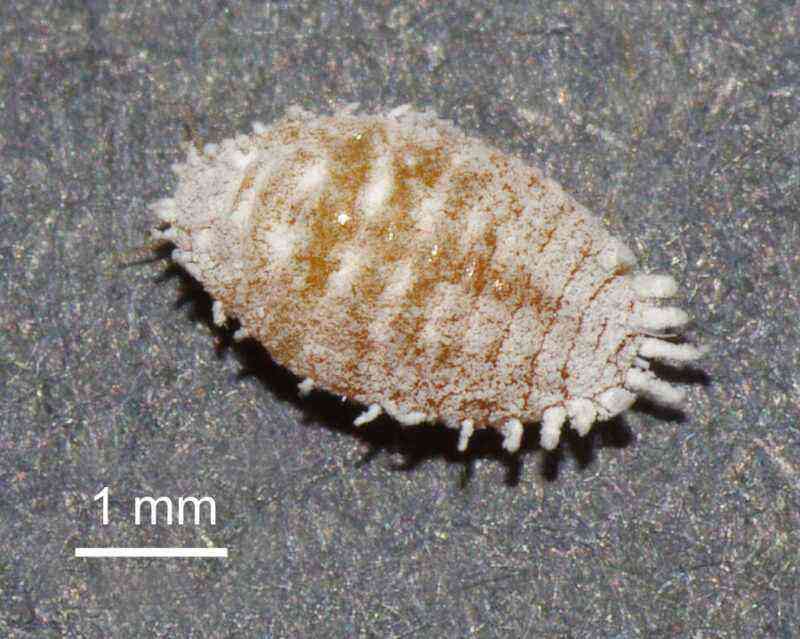
Description of agave, the use of leaves and plant sap
Succulent representatives of the family are combined into the agave subfamily, and primarily agave (Agave). In America, in the homeland of agaves, over 250 species of them are known. Huge rosettes of hard, long, thorny leaves of these plants are well known to everyone. The diameter of the rosettes in different representatives of the genus ranges from 15 cm to 5 m. When describing the agave plant, it should be noted that they bloom once in a lifetime, some only after reaching 100 years of age, and then die. But the flowering of agaves is extraordinary: peduncles with inflorescences can rise to a colossal height – up to 10m. Agaves are permanent, majestic adornments of artificial landscapes in warmer regions, but some species tolerate freezing temperatures and grow in more northern regions.
Here you can see a photo of the agave plant in the wild:
Along with maize and prickly pears, agave is the oldest cultivated plant in Mexico. In the markets of ancient Indian cities, Spanish conquistadors looked in amazement at fabrics woven from agave and prickly pear fibers.
Agave sisalana even won worldwide fame – this plant, cultivated and feral, spread to the islands of the Atlantic Ocean and even to Africa and Asia. The main use of agave leaves is to obtain durable sisal fiber, from which ropes and ropes are made. Some other agave fibers are used to make paper.
But agaves are no less important as a raw material for the production of tequila, a traditional national alcoholic drink. Like the best French wines, tequila got its name from the place of its cultivation: a town in the Mexican state of Jalisco, the center of agave cultivation. The local brewery has plantations with an area of about 4 thousand hectares, on which about 8 million agaves grow. They reach the required maturity only at the age of 8-10 years. In this case, the base of the plant – the rounded core of the rosette – reaches a mass of about 40 kg. It is cleaned of powerful long leaves, chopped up and boiled. After that, the raw materials are crushed, filtered and the process of alcoholic fermentation is started. The main use of fermented agave juice is to make a light drink, as popular as our beer. It is the basis for the production of vodka itself, called mezcal.
Tequila is called (this is a legally protected name) only mezcal produced in Jalisco and only from a certain type of agave – Agave tekuilana and its cultivars. The alcohol content of tequila ranges from 38 to 55%.
How to care for agave at home and plant types
Agaves are one of the least demanding succulent plants, so they can be recommended as a grateful object for beginners. How to care for an agave plant at home? For the successful cultivation of agaves, peduncles with children need a sunny place, a nutritious earthen mixture, a spacious pot, good watering in the warm season and a dry wintering. They easily propagate by seeds and root shoots, serve as an excellent material for phytodesigners, and can be used both in compositions of winter gardens and greenhouses, and due to their endurance in resistant plant groups located in places of interiors unfavorable for plants.
The photo “Caring for an agave at home” shows how to grow this plant:
Most often you can find Agava americana (americana). It is a common decoration in southern gardens and parks, and is often planted outdoors for the summer and in more temperate climates. Agave americana is a powerful plant with rosettes up to 3 m in diameter, individual hard curved blue-green leaves with thorns along the edges reach 175 cm.
In room and greenhouse culture, popularity has gained Agave victorie-regine with spherical rosettes formed by rigid, triangular leaves. White stripes run along the edges of the dark green leaves, giving the plant a particularly elegant look.
У Agave Parry fleshy and rounded gray-green leaves, somewhat reminiscent of a fat woman.
Agave strictaon the contrary, it is more like a yucca, since its leaves are long and thin.
